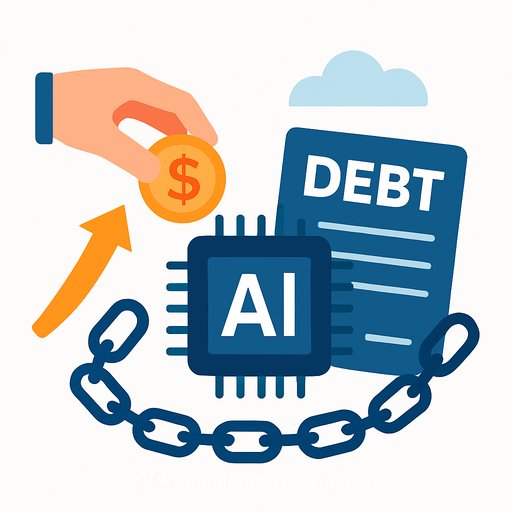AI's Transformation of the Finance Function Is Incremental - and Irreversible
CFOs are committing to AI where the numbers are undeniable: fraud detection, payments reconciliation, and compliance. These use cases offer fast payback and clear KPIs, so they move first. Broader finance workflows - planning, capital allocation, forecasting - follow only after data quality, governance, and integration guardrails are in place. Trust is the gating factor.
Why Finance Leaders Start with Fraud, Reconciliation, and Compliance
Fraud patterns shift faster than rules can keep up. AI models scan high-volume transactions, spot weak signals, and flag risk in near real time. That outperforms static thresholds, especially across synthetic identities, shell vendors, and cross-border payments.
On the operations side, AI reduces reconciliation time and error rates. Invoices match faster, exceptions route to the right owner, and audit trails improve. These wins are visible in the close, the cash cycle, and audit readiness - which is why they get funded.
Vendors are leaning in as well, with partnerships that package AI for compliance and AP automation. The pattern: high-ROI deployments first, then phased expansion once systems and data are ready.
The Risk Calculus and the Data Prerequisite
Most product and finance leaders expect AI to strengthen fraud detection, compliance, and data security. The throughline is data fidelity. As one payments executive put it, you can't apply AI without high-quality data at scale - and CFOs know it.
That's pushing teams to clean master data, standardize chart-of-accounts mappings, and consolidate feeds into cloud ERPs and finance data platforms. Better inputs enable better models, lower false positives, and fewer manual reviews.
Incremental by Design: Governance Before Autonomy
CFOs are not handing AI unrestricted access to systems or sensitive data. Few will even grant moderate autonomy without strong controls. The lesson from early pilots: bolt-on AI over fragmented workflows can create noise instead of insight.
The smarter path sequences AI with modernization. Run fraud and compliance pilots where data is clean and outcomes are measurable. In parallel, upgrade ERP, close management, and data pipelines so forecasting and scenario modeling can benefit later.
A Practical Playbook for CFOs
- Start with clean data: vendors, customers, GL, payments, and document OCR quality. Set data ownership and remediation SLAs.
- Pilot where KPIs are tight: fraud alerts, reconciliation cycle time, chargeback rate, and compliance exception rate.
- Choose the integration path: API-based enrichment, human-in-the-loop workflows, and read-only access before write permissions.
- Lock governance early: model risk management, audit logs, PII controls, and RACI for override decisions.
- Measure and iterate: compare against rule-based baselines; tune thresholds to balance loss, recovery, and manual review cost.
- Plan handoffs: define when AI recommends vs. auto-acts, and how finance approves escalations.
- Budget for upkeep: model drift monitoring, retraining cadence, and vendor evaluation every two quarters.
Early Wins You Can Bank On
Finance teams report shaving days off monthly reconciliations through AI-assisted matching and exception handling. Productivity gains of 5-20% show up without heavy upfront spend - especially in AP, AR, and close tasks.
Quick targets: invoice-to-PO matching, vendor master validation, expense policy enforcement, and duplicate payment prevention. Each reduces touches, improves accuracy, and tightens controls.
KPIs That Prove Value
- Fraud: detection rate, false positive rate, time-to-detect, recovery rate, chargeback rate.
- Reconciliation: match rate, exceptions per 1,000 transactions, cycle time, close time.
- AP/AR: touchless invoice rate, first-pass yield, DSO/DPO impact, duplicate payment rate.
- Compliance: exception rate, time-to-remediate, audit findings, model override rate.
- Model health: drift metrics, data freshness, human acceptance rate, SLA adherence.
Trust, Controls, and the Next Phase
Treat AI like any control that affects financial reporting: document it, test it, and monitor it. Align with established guidance on model risk, bias testing, and auditability to keep regulators and auditors confident. For a practical framework, review NIST's AI Risk Management guidance.
NIST AI Risk Management Framework
As data pipelines mature, expand into forecasting, scenario planning, and working capital optimization - but keep human approval on material decisions. The trajectory is clear: phase by phase, AI becomes part of the finance control surface.
Upskill the Team That Runs the Numbers
Your advantage comes from operators who can translate process logic into prompts, features, and thresholds. Invest in targeted training for AP/AR leads, controllers, and FP&A analysts to shorten the learning curve and reduce vendor dependency.
Finance-focused AI tools and training
Bottom Line
AI in finance is moving fast where ROI is proven and controls are tight - fraud, reconciliation, compliance. Broader adoption will track data quality and governance readiness. The shift is phased, careful, and one-way.
Your membership also unlocks:






